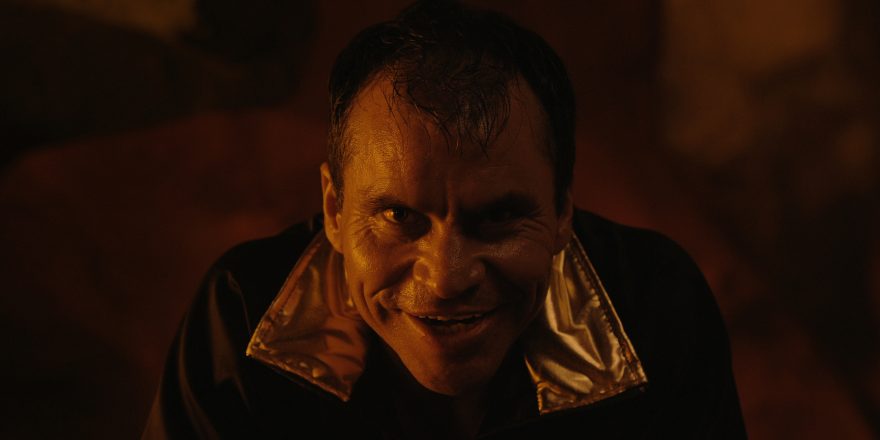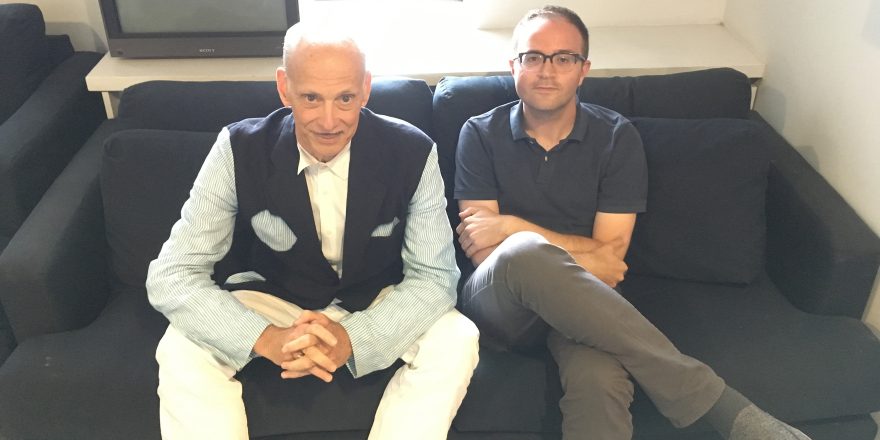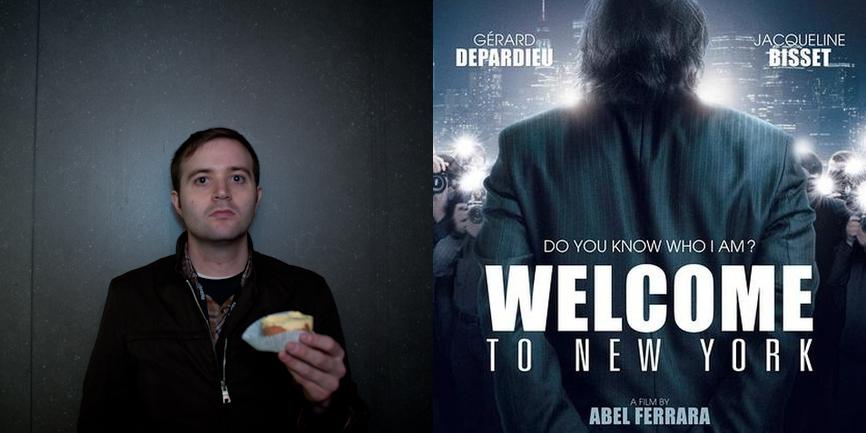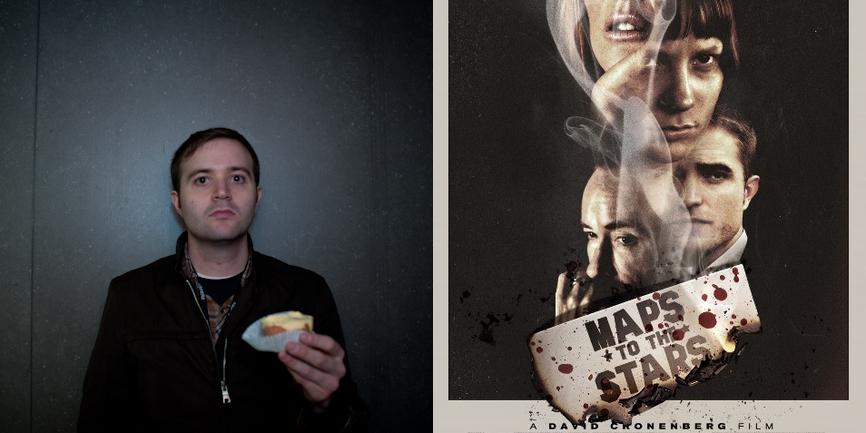Six hours after getting off a plane in Austin, Texas, I am sardined in a pulsing, sweat-drippy crowd, watching a thirtysomething-piece band whose faces are all covered with black masks beat out an unending bombardment of throbbing, hypnotic music that you don’t dance to as much as your body spasms to the rhythm. Their outfits are eclectically cross-cultural – evoking belly dancers, Chinese dragons and wide-brimmed hats borrowed right out of Alejandro Jodorowsky’s wardrobe for The Holy Mountain. As some members of the ensemble play their instruments onstage, others move silently and ominously through the crowd, unintentionally clocking a spectator in the forehead with an instrument every now and then. Our safety is not their priority. We are only humans, after all.
The power of this ritualistic, otherworldly experience will remain forever undercut by an anecdote I was told later that night. A friend had observed members of the group, Itchy-O, removing their masks shortly after their on-stage spectacle, and were disappointed to find they were bearded hipsters just like, well, pretty much everyone else at Fantastic Fest – the film festival brainchild of Alamo Drafthouse founder Tim League – whose programming reaches to the far corners of the Earth and constantly pushes the boundaries of any preconceptions of the term “genre,” but whose post-screening bathroom lines reveal its audience overwhelmingly to be nerdy dudes. Fantastic Fest is most significant because it forefronts the experience of attending the festival as its primary draw. You will have fun here, you will leave your comfort zone, you will have to drink a few Bloody Marys the following morning to feel like a person again.
It’s entirely appropriate, then, that the best movies I saw at Fantastic Fest were also primarily concerned with providing an experience, with the messiness and contradictions of human life, and with the viscera and failings of the body. The aesthetic and narrative freedoms afforded by genre cinema aren’t a carte blanche for filmmakers to do whatever asinine bullshit pops into their heads as long as it has the requisite amount of nudity and gore, but actually present a moral imperative to lay bare and subsequently grapple with humanity’s basest, ugliest emotions. Effective genre movies can achieve emotional depths that few other art forms can achieve.
We watch Berger drink himself into a stupor, lament his past life, and scream, scream, scream when his every whim isn’t immediately indulged.While Emiliano Rocha Minter’s We Are the Flesh is for all intents and purposes a narrative film, it takes a pretty heavy nosedive into nightmarish surrealism, using a canvas of sexually explicit imagery that blurs the fact/fiction lines with malevolent glee. The threadbare plot follows a brother and sister who find sanctuary with a deranged old man who coerces them into graphic acts of incest and cannibalism. It doesn’t operate like a traditional movie, choosing to be genuinely horrifying instead. Yet another in a series of new, cheaply made, extremely fucked-up movies from Mexico, Flesh walks (slithers?) in the footsteps (slime trail?) of Brazilian horror auteur José Mojica Marins, whose lurid, psychedelic visions of Hell in films such as This Night I’ll Possess Your Corpse and Awakening of the Beast are echoed in Flesh’s garish production design and color palette. We Are the Flesh is an aesthetically rigorous, morally trepidatious little video atrocity that’s 100 percent unforgettable.
Julia Ducournau’s Raw also examines sex and cannibalism with an eye to the experimental, but it does so with an infectious compassion for its characters and a confident, poppy style. Without shying from the visceral, Ducournau crystallizes the ache of adolescence and eschews the leery pitfalls that so many male-directed films about budding female sexuality slip into. Which is not to say that Raw isn’t an exploitation film at heart – it has cheap thrills to spare and executes them effortlessly. (There’s a particularly squirmy scene involving a severed finger.) But beyond the sex and violence, Ducournau exploits her audience’s expectations and just when you think you know where Raw is going, she smartly sidesteps cliché in the service of emotional truth.
I first became aware of Andreas Horvath’s Helmut Berger, Actor when it popped up in the number one spot on John Waters’ top 10 list for Art Forum last year. Waters wrote, “Maybe the best motion picture of the year is also the worst?” and that’s a pretty apt summation of enduring Horvath’s documentary (you cannot “watch” it in any traditional sense), which follows the titular former Euro-heartthrob as he mopes around in his squalid apartment, shrieking at his maid and making increasingly more aggressive advances on the filmmaker. We watch Berger drink himself into a stupor, lament his past life, and scream, scream, scream when his every whim isn’t immediately indulged. Horvath holds back at first, watching these tantrums and chiding Berger’s erratic behavior, but as the filming continues, every barrier that can and should exist between documentary subject and filmmaker is decimated. What exists at the end of Helmut Berger, Actor is nothing more than two people, fucked up on life and each other, converging in a way that makes all other recent efforts to examine the documentarian-subject relationship pale in comparison.
Paul Verhoeven’s Elle is a flawlessly orchestrated mess, which is to say it’s an almost perfect movie about the clusterfuck of the human emotional spectrum. It was the best film I saw at Fantastic Fest and may very well be the best film of the year. It’ll be written about and reviewed widely very soon, so I’m not sure how much I can add to the conversation myself, other than to say, see it immediately because you will want to see it at least two or three more times before it leaves theaters. Like the other great work I saw in Austin last month, its form and genre-trappings are nothing more than the raw material for a complicated, honest work of art.






